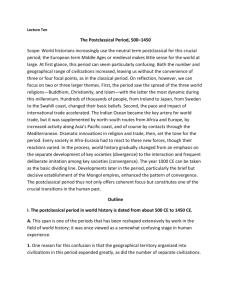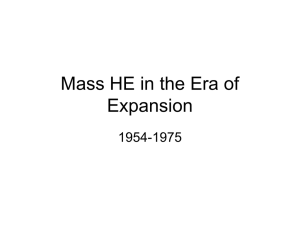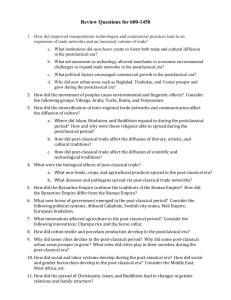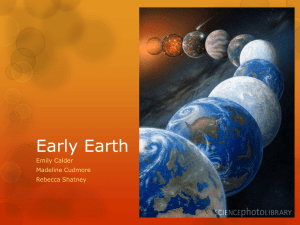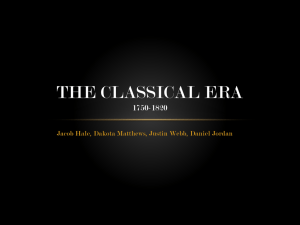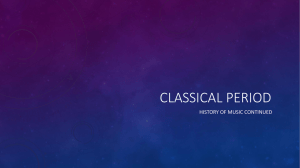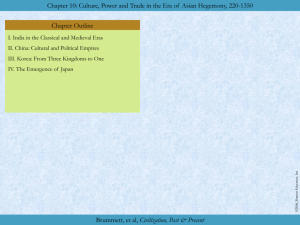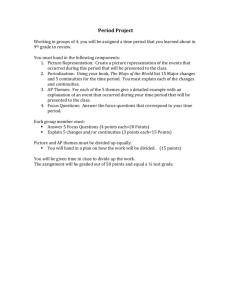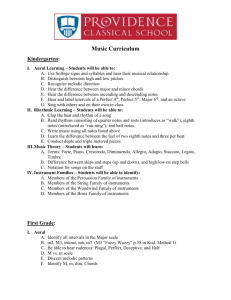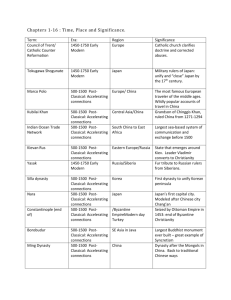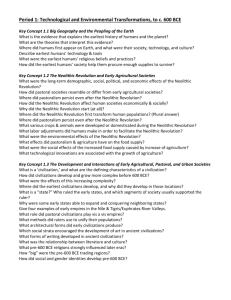File
advertisement
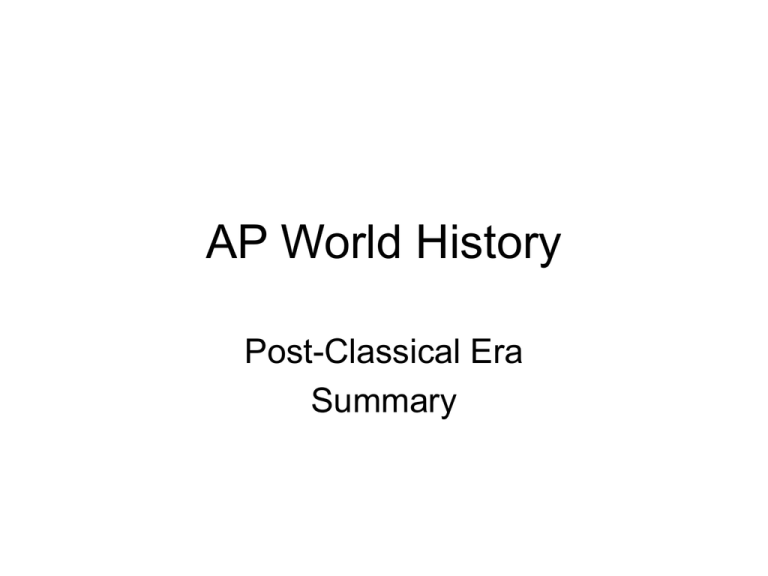
AP World History Post-Classical Era Summary Chronology of Postclassical Period • World civilization map became greatly altered – By decline of classical civilizations – Nomadic invasions from central Asian • Also, another era opened as Europeans explored the wider world Post Classical Era--Rise of Islam • Islam created a new empire encompassing – Asia, Africa, & Europe • During the classical period correct to say their was a balance of civilizations • With Islam this new empire (parts of Asia, Africa, & Europe) becomes a world leader • Islam’s decline marks the end of this phase of world history Post Classical Era Expansion of Civilization • Civilization spread into many new regions – Parts of Africa – Parts of Europe – Japan • American & Polynesian societies expand Post Classical Era Expansion of Civilization • Six diverse areas important in postclassical era – India & southeast Asia – China & East Asia – Americas – Eastern & western Europe – Middle East & North Africa – Sub-Saharan Africa Postclassical Era World Religions • Major religions spread into Asia, Africa, & Europe • Islam, Christianity, & Buddhism brought a new focus to spirituality and an afterlife • These religions reached beyond local cultures – Brought diverse peoples together – Growth in international commerce also influenced this Postclassical Era World Network • Most important characteristic was development of world network – International trade & military contacts promoted intellectual & material exchanges • Negative with world network: diseases • Once in place the network simply continued to expand • Americas, Polynesia, & Australia were not yet included in this world network Postclassical Era World History Themes • Agriculture expanded in postclassical era • No real massive environmental problems • Not many new fundamental technological changes • Basic structure of social & gender inequalities persisted • Nomadic impact of Mongols was major influence on world history • New religions gave opportunity for influence Post Classical Era What did not happen • Eastern & Western Hemispheres were not joined – Trade networks intensified, but no sustained contact between hemispheres – Americas developed in isolation from the connected realms of Asia, Europe, & Africa – Australia and Polynesia developed on their own Post Classical Era What did not happen • Innovations were not numerous, although technology expanded – Expansion of technology was more the norm, than innovation (print technology & gun powder did develop in East Asia – Previous technologies diffused beyond their original foundation point: camel saddles, stirrups, steel plows & silk-making techniques Post Classical Era What did not happen • No political form became dominant – Empire was the dominant form from 600 BCE to 600 CE – During Post Classical empires were smaller & other originations appeared such as kingdoms, caliphates, & khanates, but no overall form appeared Post Classical Era What did not happen • Environmental changes were not as great as in other areas – More areas became agricultural, but no massive transformation of areas occurred as before: – Classical period soil had been depleted of nutrients (Roman Empire fell in part due to this, as agricultural production had declined) Post Classical Era What did not happen • Most societies remained patriarchies with clear social distinctions – Few changes occurred in gender relations, although inequality actually grew between sexes – Slavery remained in place on about the same level – Status and wealth still based on land ownership





